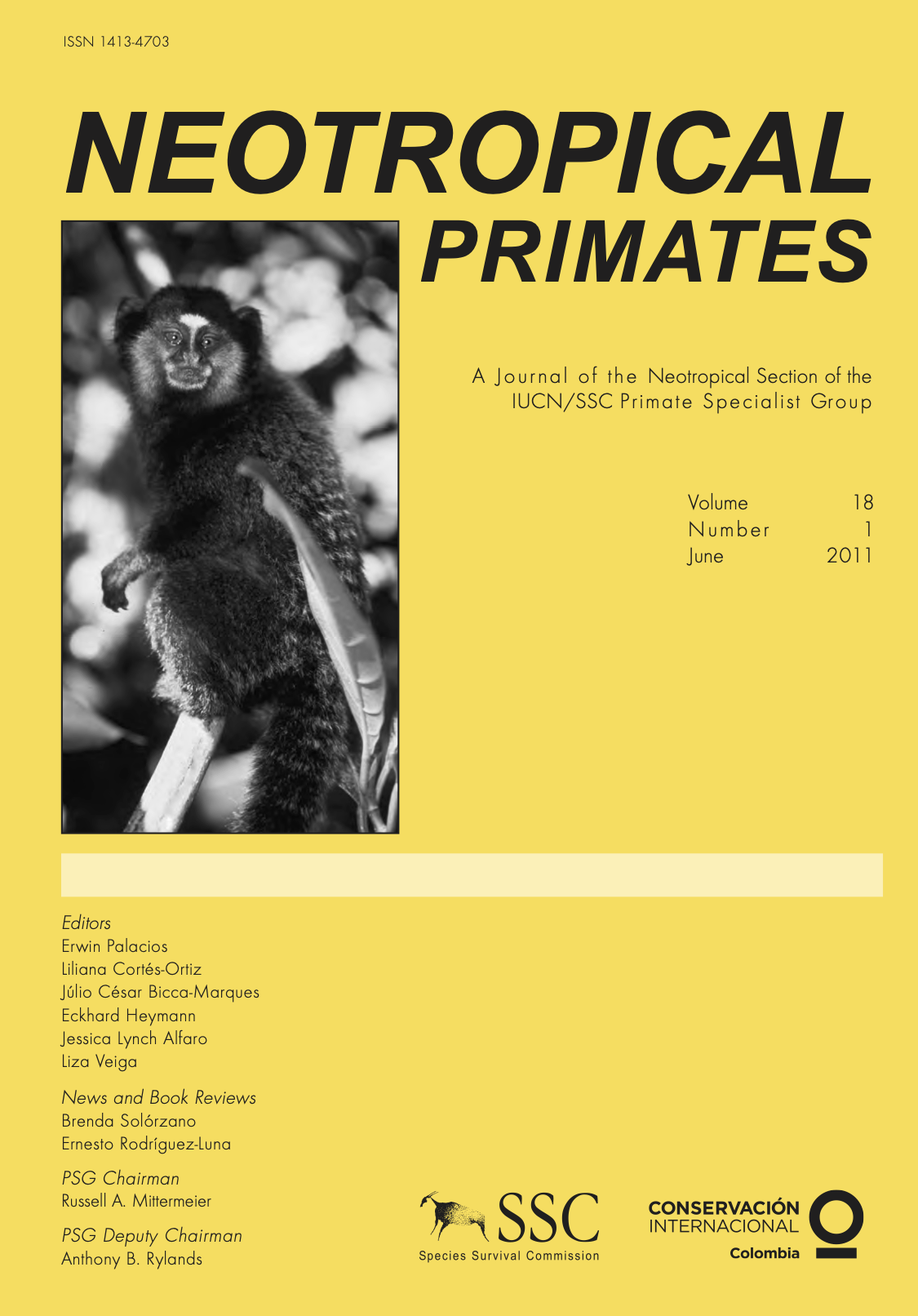Searching for Alouatta palliata in northern Colombia: considerations for the species detection, monitoring and conservation in the dry forests of Bolívar, Colombia
DOI:
https://doi.org/10.1896/044.018.0101Keywords:
Black mantled howler monkey, primate conservation, dry forests, Colombia, El GuamoAbstract
The conservation status of A. palliata, commonly referred to as black mantled howler monkey, is vulnerable in Colombia because of its decline in population. The distributional limit in the northeast of the country is not well defined and the dry forests of the north of the country are being destroyed at alarming rates. In the municipality of El Guamo (Bolívar) less than 20% of the landscape is composed of forests. The two largest remnants of forests in the municipality have extensions of 3,544.7 and 879.6 ha each. From interviews with the community, I concluded that habitat loss is the main threat to primate populations. 37.6 % of the community of inhabitants said they had seen the monkey in the municipality of Guamo, however, I found no A. palliata during a short transect sampling. Individuals of the species Alouatta seniculus and Saguinus oedipus were detected during these walks. Conservation actions such as reforestation, establishment of agroforestry systems and corridors designed to improve the habitat of A. palliata should encourage the participation of the human communities.

Downloads
Published
Issue
Section
License

This work is licensed under a Creative Commons Attribution-NonCommercial-ShareAlike 4.0 International License.


